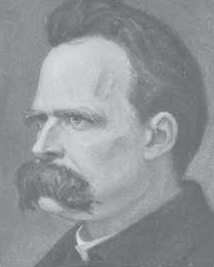Strauss - Also sprach Zarathustra - Dudamel Richard Strauss Richard Strauss - Also sprach Zarathustra, Op. 30 Also sprach Zarathustra, Op. 30 (Thus Spoke Zarathustra or Thus Spake Zarathustra) is a tone poem by Richard Strauss, composed during 1896 and inspired by Friedrich Nietzsche's philosophical treatise of the same name.
차라투스트라는 이렇게 말했다프리드리히 니체 Also sprach Zarathustra 유례없는 실존적 성실을 배경으로 니힐리즘의 초극을 모색한 니체의 이 저작은 진지하게 인간성의 재생을 지향하고 있는 현대인들에게 많은 점을 호소하고 있다. 이 책에서 니체는 초인사상과 권력에의 의지, 영원회귀사상 등을 전개하고 있다. 〈니힐리즘과 니힐리즘의 초극 〉 ‘동일한 것의 영원 회귀’라는 니체의 사상 역시 니힐리즘과 니힐리즘의 초극이라는 양면성을 동시에 지니고 있다. 모든 것은 무의미의 동일한 반복에 지나지 않으며 삶조차도 무의미할 뿐이라는 절망이 바로 이 사상의 니힐리즘적 측면이다. 다른 한편으로는 인생의 단 한 순간이라도 후회 없이 성실히 살아가는 것, 곧 그런 순간이 영원히 반복되는 것을 바라 마지않을 정도로 의미 있게 살아가며 그런 순간이 존재하기 위해서는 반드시 필요하다고 여겨지는, 참기 어려운 인생의 다른 모든 순간에 대해서도 영원 회귀를 꿈꾸게 될 때, 이 사상에 포함되어 있는 니힐리즘은 초극되고, 이 사상에 담긴 긍정적 면인 운명에 대한 사랑이 비로소 자신의 것이 된다는 사상이 담겨 있다. 프리드리히 니체(Friedrich Nietzsche) 이 책은 4부로 구성되어 있다. 1881년 8월 ‘이 책의 기본 구상인 영원회귀사상’을 착상한 후, 1883년 2월 제네바 근교에서 제1부가 집필되어 이해 6월에 간행되었다. 제2부는 9월에, 제3부는 1884년 3월에 간행되었다. 제4부는 1885년 2월 완성해 4월 말에 40부 정도를 자가 인쇄하여 일곱 명의 친구들에게 보냈다.  프리드리히 니체(Friedrich Nietzsche) 리하르트 슈트라우스 Also sprach Zarathustra Op.30니체의 《차라투스트라는 이렇게 말했다》를 읽고 감명을 받은 슈트라우스가 그 내용을 담아내면서, 음악과 철학의 결합을 꽤한 작품이다. 큐브릭 감독의 영화 〈2001년 스페이스 오디세이〉(1968)에 이 작품이 사용되면서 세계적으로 유명해진 작품이다. 철학과 음악의 만남 슈트라우스는 니체(Friedrich Wilhelm Nietzsche, 1844~1900)의 《차라투스트라는 이렇게 말했다》를 읽고 그 내용에 감명을 받아 음악으로 작곡할 결심을 한다. 슈트라우스는 니체의 철학을 접하기 전부터 철학에 관심을 가지고 있었다. 작품이 작곡되기 14년 전, 슈트라우스에게 1882년 뮌헨 대학에서 철학 강의를 들을 기회가 생겼다. 그 당시 쇼펜하우어의 철학에 많은 관심 갖고 있던 슈트라우스는 이를 계기로 니체의 철학서도 읽었다. 당시 막 출판된 니체의 《차라투스트라는 이렇게 말했다》(1883~1885)를 읽은 슈트라우스는 그 안에 담겨진 종교에 대한 생각이 자신의 생각과 유사함을 알게 되면서, 이 소설을 소재로 한 교향시를 작곡하기로 한다. 교향시의 제목은 당연히 니체의 원작의 제목을 가져왔으며, 이는 교향시 총보에 니체의 원작 서문을 올린 것에서도 작곡가의 의도를 알 수 있다. 슈트라우스의 철학과 음악의 만남을 꽤한 이 시도는 당시 찬탄과 동시에 무리한 시도라고 비난받았다. 여기에 대해 슈트라우스는 철학적인 음악이나 니체의 저작을 음악으로 표현하려고 한 것이 아니며, 이 작품은 니체의 천재성에 대한 찬사로 계획된 것임을 밝힌다. 그러나 지금에 와서 이 작품이 서사적 음시임을 반대할 사람은 없어 보인다. [출처]절대지식 세계고전/ |
'Classic ' 카테고리의 다른 글
| [스크랩] THE 10 SEXIEST MOMENTS IN CLASSICAL MUSIC (0) | 2018.09.07 |
|---|---|
| [스크랩] 만물이 여무는 가을, 가을에 들으면 좋을 클래식 음악 (0) | 2018.09.05 |
| [스크랩] Giovanni Paisiello / Serandenmuisik for Wind Ensemble (0) | 2018.08.28 |
| [스크랩] Johann Stamitz / Trio for orchestra in C major, Op.1 No.1 (0) | 2018.08.27 |
| [스크랩] 영웅의 생애, 위대하나 고독한 자의 일대기- R.Strauss: "Ein Heldenleben" (0) | 2018.08.26 |